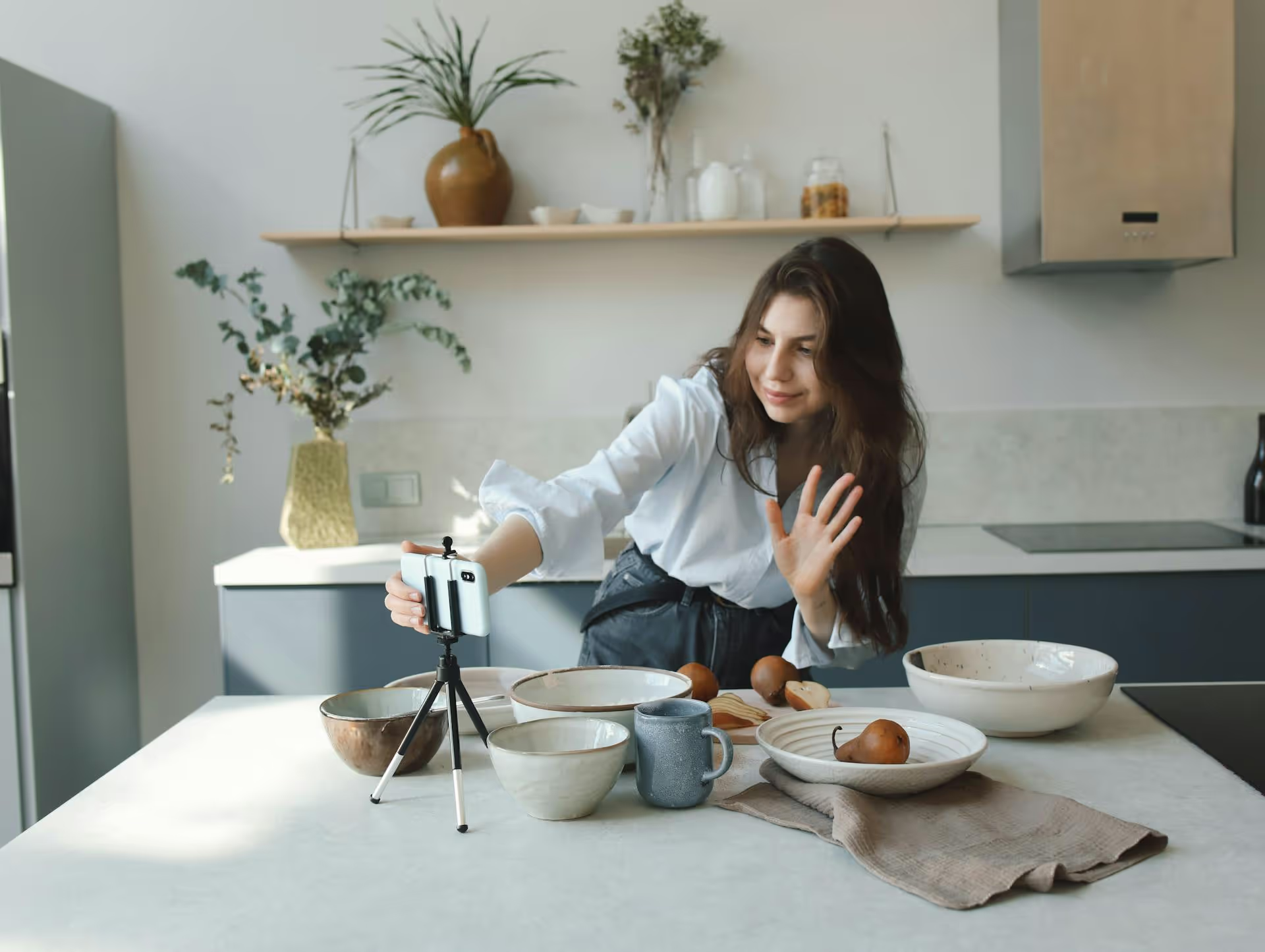How to Add Social Media Icons to an Email Signature
Enhance your email signature by adding social media icons. Discover step-by-step instructions to turn every email into a powerful marketing tool.

The slow-motion effect is one of the most powerful and versatile tools in your TikTok creator toolkit, turning an ordinary moment into something dramatic, funny, or visually stunning. It grabs attention, emphasizes detail, and adds a 'wow' factor that can stop the scroll. This guide will walk you through three different methods for creating a perfect slow-mo video, from the simple in-app recorder to advanced techniques for that polished, professional look.
Before getting into the how-to, it’s worth understanding why this effect works so well. Slow motion does more than just slow down time, it changes the viewer's perception. It forces the audience to pay closer attention to what's happening on screen. Think about some of the most satisfying video trends:
At its heart, slow motion helps you tell a better story. It lets you direct your audience's focus to exactly what you want them to see, feel, and appreciate in your video. Now, let’s get into the methods to make it happen.
This is the fastest and most common way to create a slow-motion effect directly inside the TikTok app. It’s perfect for capturing spontaneous moments or when you know ahead of time that you want the entire clip to be in slow motion. The controls are simple and baked right into the recording screen.
You don't have to commit to one speed for the entire video clip. You can create a really dynamic effect by switching speeds mid-recording. For example:
This technique creates a "speed ramp" effect that adds a professional feel, guiding the viewer’s attention exactly where you want it. It's fantastic for dance moves, revealing a project, or highlighting a single action.
What if you already have a video saved to your phone that you want to add slow-motion to? Maybe you filmed it using your phone’s high-quality native camera app. Or perhaps you only want a tiny portion of a longer clip to be in slow motion. In this case, you can use TikTok’s internal editor to adjust the clip’s speed after uploading it.
This method gives you more precise control over which segments are slowed down, leaving other parts of the video at normal speed.
Editing after filming gives you the creative freedom to experiment. You can test out which part of the video looks best in slow motion, something that’s harder to judge on the fly while recording.
For creators who want ultimate control and the smoothest possible slow-motion effect, using a third-party video editor is the way to go. Apps like CapCut (made by the same parent company as TikTok), InShot, or even more advanced software like Adobe Premiere Rush offer features that go beyond TikTok’s basic tools. The biggest advantage? The ability to work with high-frame-rate footage.
Why High Frame Rate Matters: Most phones can shoot video at 60, 120, or even 240 frames per second (fps). Standard video is around 30 fps. The more frames you capture per second, the smoother the footage will look when you slow it down. It’s like having more "in-between" images to display, which eliminates the choppy or blurry look that can happen when slowing down standard 30 fps footage.
Now that you know the technical side, here are a few ideas to get you started:
Slow motion is a simple yet incredibly effective feature that can seriously elevate your TikTok content, whether you're using the quick in-app tool or dedicating extra time with an external editor. By highlighting key movements and adding a touch of drama, you can create more engaging videos that make people want to watch again and again. Experiment with these different methods and see which workflow best fits your creation style.
Once you’ve mastered creating eye-catching videos, the next puzzle is figuring out when to post them for maximum impact and how to manage your content calendar without feeling overwhelmed. That’s a challenge we deeply understand. We built Postbase from the ground up to solve this for modern creators and social media managers. Our visual content calendar gives you a complete overview of your entire strategy across all your platforms, while our video-first scheduler was designed specifically for platforms like TikTok and Reels, ensuring your content publishes reliably, every time. It’s all about helping you focus on the creative part, knowing the logistics are handled.
Enhance your email signature by adding social media icons. Discover step-by-step instructions to turn every email into a powerful marketing tool.
Learn how to add your Etsy link to Pinterest and drive traffic to your shop. Discover strategies to create converting pins and turn browsers into customers.
Grant access to your Facebook Business Manager securely. Follow our step-by-step guide to add users and assign permissions without sharing your password.
Record clear audio for Instagram Reels with this guide. Learn actionable steps to create professional-sounding audio, using just your phone or upgraded gear.
Add translations to Instagram posts and connect globally. Learn manual techniques and discover Instagram's automatic translation features in this guide.
Optimize your Facebook Business Page for growth and sales with strategic tweaks. Learn to engage your community, create captivating content, and refine strategies.
Wrestling with social media? It doesn’t have to be this hard. Plan your content, schedule posts, respond to comments, and analyze performance — all in one simple, easy-to-use tool.